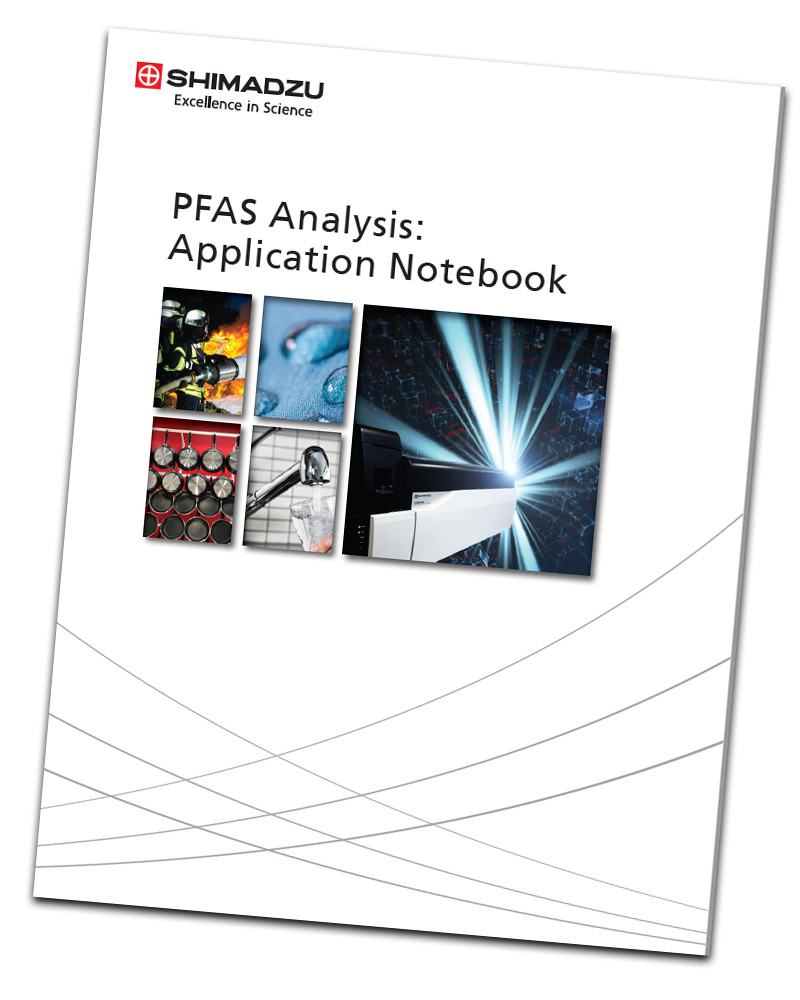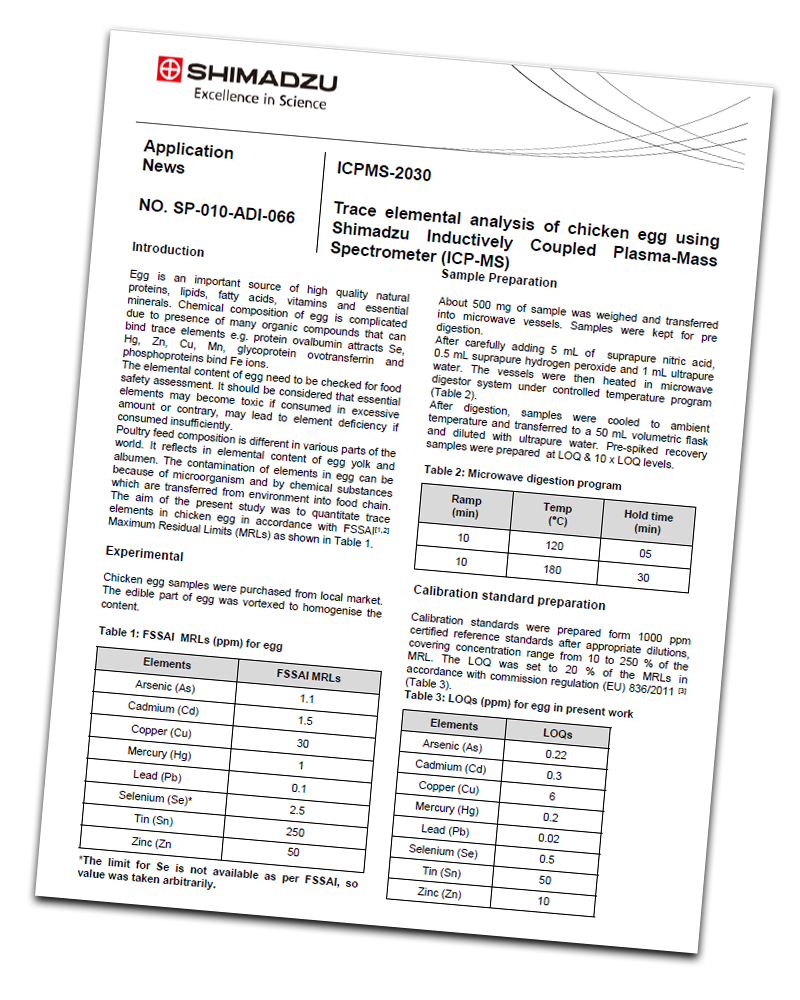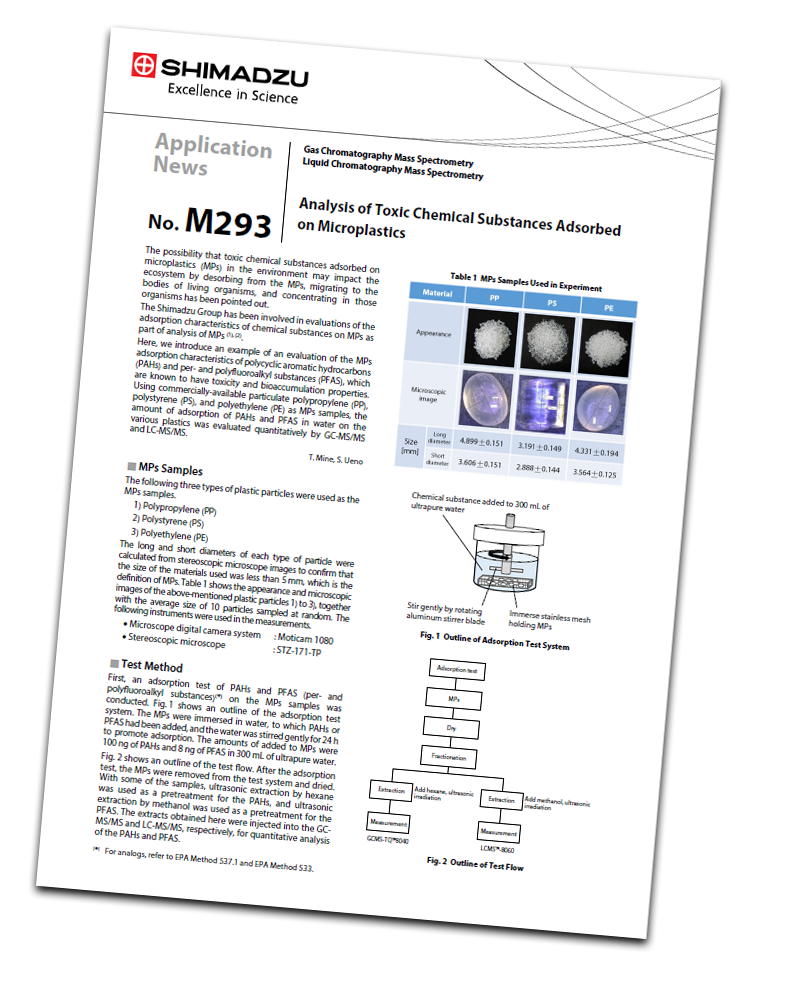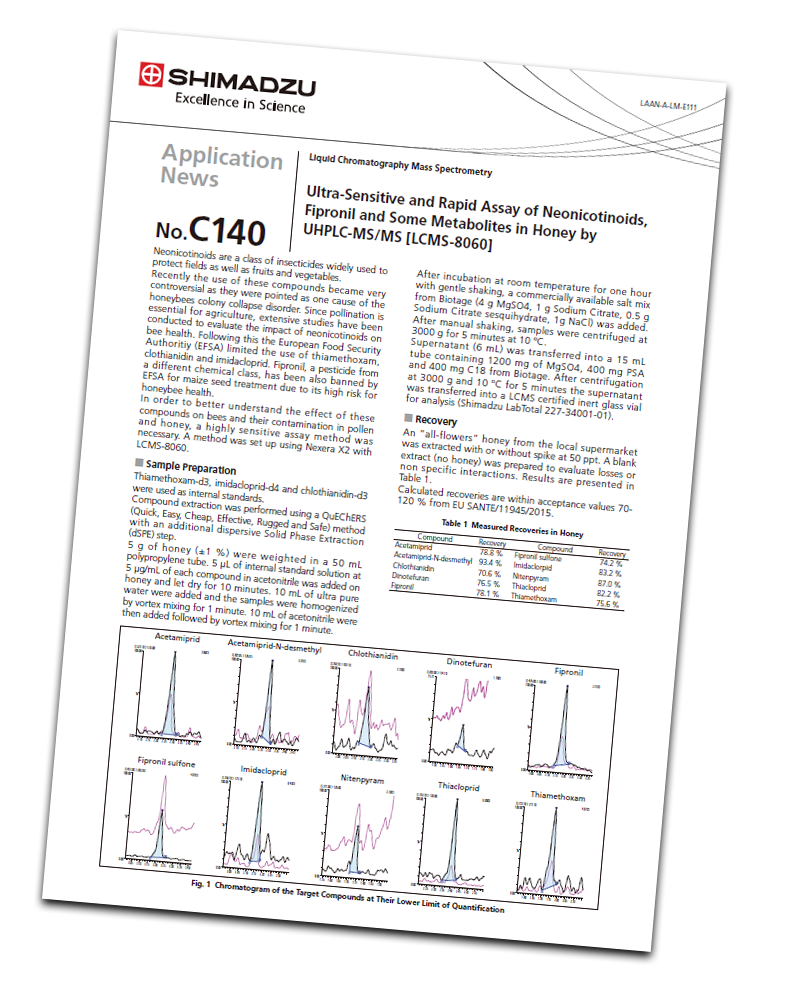Separation Science, in collaboration with Shimadzu, offers a series of application notes introducing analysis methods for substances of concern such as PFAS, microplastics, and metallic elements. Click on the button below to download your personal copies.


PFAS Analysis Application Notebook Per- and polyfluoroalkyl substances (PFAS) are currently of great public health and environmental concern. Because PFAS are ubiquitous and demand for information about their occurrence is increasing, laboratories need streamlined protocols for generating accurate data with fast turn-around times. This notebook provides a number of examples showcasing the use of ultra fast LC-MS/MS for the analysis of PFAS using multiple methods.
Per- and polyfluoroalkyl substances (PFAS) are currently of great public health and environmental concern. Because PFAS are ubiquitous and demand for information about their occurrence is increasing, laboratories need streamlined protocols for generating accurate data with fast turn-around times. This notebook provides a number of examples showcasing the use of ultra fast LC-MS/MS for the analysis of PFAS using multiple methods.
Learning outcome:
You will learn about various methods for analyzing PFAS and how LC-MS/MS can provide fast, accurate, reliable results.
Trace Elemental Analysis of Chicken Eggs Using Shimadzu’s ICP-MS Eggs are an important, natural source of high-quality proteins, lipids, fatty acids, vitamins, and essential minerals. However, eggs can get contaminated with microorganisms and chemical substances when they are transferred from farms to the food chain, and therefore, need to be inspected for food safety purposes.
Eggs are an important, natural source of high-quality proteins, lipids, fatty acids, vitamins, and essential minerals. However, eggs can get contaminated with microorganisms and chemical substances when they are transferred from farms to the food chain, and therefore, need to be inspected for food safety purposes.
Here we introduce how to quantitate trace elements, such as Hg, Zn and Cd, in food.
Learning Outcome:
You will learn how the ICPMS-2030 enables reliable, robust, and reproducible results when determining trace elements, even with a complex matrix like an egg.
Analysis of Toxic Chemical Substances Adsorbed onto Microplastics The presence of toxic and bioaccumulative substances, such as PAHs and PFAS, sorbed onto microplastics poses an ecological risk when particles are ingested by fish or other organisms.
The presence of toxic and bioaccumulative substances, such as PAHs and PFAS, sorbed onto microplastics poses an ecological risk when particles are ingested by fish or other organisms.
Here we introduce an evaluation of microplastics’ adsorption of polycyclic aromatic hydrocarbons (PAHs) and per- and polyfluoroalkyl substances (PFAS), which are known to be toxic and bioaccumulate.
Learning Outcome:
Using both LC-MS/MS and GC-MS/MS, this application note shows how the adsorption characteristics of chemical substances on microplastics differ for each substance and that the hydrophobicity of the individual chemical substances may be a critical factor for their transfer ratio.
Ultra-Sensitive and Rapid Analysis of Neonicotinoids, Fipronil, and Other Metabolites in Honey by UHPLC-MS/MS Neonicotinoids are the most widely used insecticides on a global scale. These chemicals have been found to be the culprit for the decline of honeybee colonies.
Neonicotinoids are the most widely used insecticides on a global scale. These chemicals have been found to be the culprit for the decline of honeybee colonies.
To better understand the effect of these compounds on bees and their contamination in pollen and honey, we have developed a highly sensitive UHPLC-MS/MS analysis method.
Learning outcome:
With simple sample preparation, high sensitivity, and excellent stability, this method offers an efficient way to better understand the impact of neonicotinoids and fipronil on honey bee colonies.
 For more resources about environmental analysis from Shimadzu click here >>
For more resources about environmental analysis from Shimadzu click here >>




